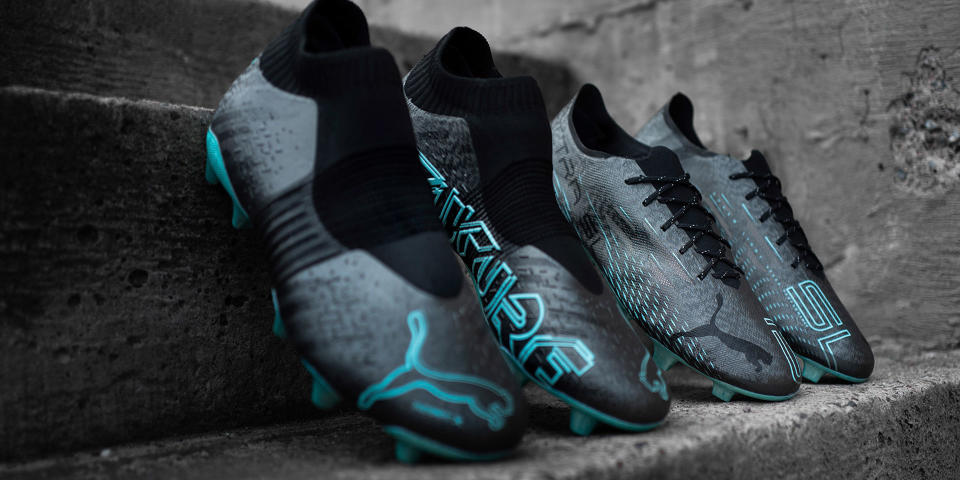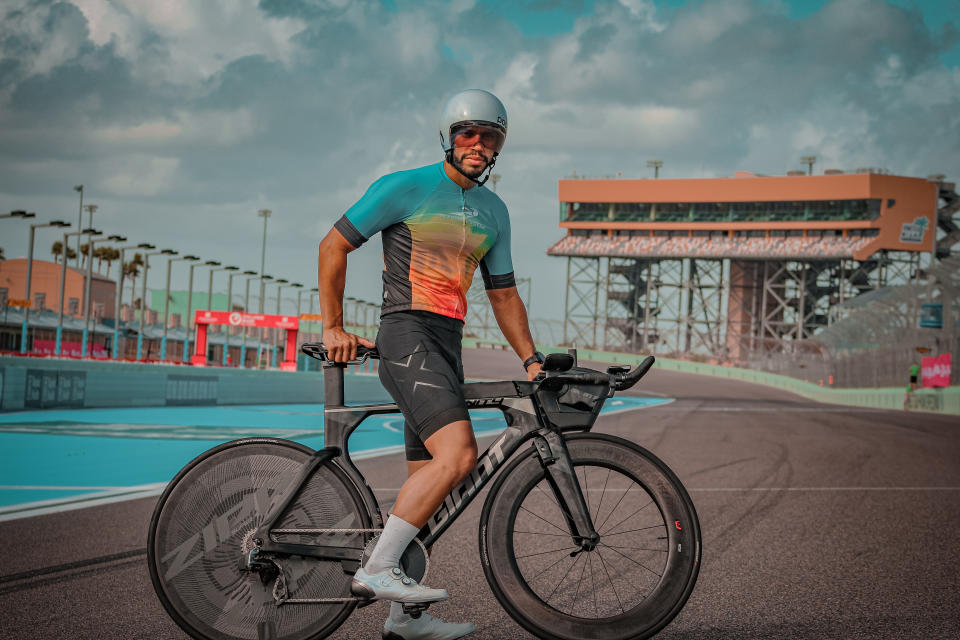Performance Fabrics in 2021: What’s On the Market and What Consumers Want

The message is loud and clear from consumers: comfort and performance are what they’re clamoring for in a post-pandemic world. And fabric producers have heard the call and are responding with a variety of materials and products to meet those demands.
For decades, performance fabrics have been a key ingredient in apparel for the sport and outdoor markets, but now everything from men’s sport coats to women’s dresses are using fabrics that boast a range of technical features: moisture-wicking, antiodor, cooling properties and more.
More from WWD
One of the leaders in this end of the market is Schoeller, a Swiss company that traces its roots to 1868. Stephen Kerns, president of Schoeller USA, said today it’s all about consumers seeking garments that can tick a lot of boxes.
“They want to present well and they also want versatility,” he said. “The outdoor brands went there a while ago, but now we’re seeing demand from [more traditional apparel brands].” Although Schoeller has “always had strong play with crossover brands” like Bonobos, Theory, Brooks Brothers and Ralph Lauren, he said this whole new “commuter movement,” which arose from athleisure, is creating more interest for fabrics with technical attributes that also look good.
In June, Schoeller introduced new versions of several products for spring 2023, including the Dryskin, a two-way stretch fabric made with recycled polyester and Ecorepel Bio technology that transports moisture and resists abrasion and can be used in sports and lifestyle apparel.
The company updated its Schoeller Shape, a cotton blend made from recycled polyamide that works as well on the golf course as on the city streets, according to the company. It has a two-tone effect reminiscent of worn denim and 3XDry Bio technology. In addition, there’s a Softight ripstop fabric created for pants made from recycled polyamide and finished with Ecorepel Bio technology that offers a high level of water- and dirt-repellence, is PFC-free and based on renewable raw materials.

“You can use these fabrics in bottoms, tops and jackets,” Kerns said. “You can get caught in a dust storm and particles won’t stick to it.”
With so many people experiencing sizing changes as a result of pandemic-prompted lifestyle changes, Kerns said there’s a “huge wardrobe opportunity” for apparel that stretches but doesn’t sacrifice aesthetic appeal.
Alexa Raab, global brand and communications leader for Sorona, a bio-based, high-performance polymer from DuPont made from 37 percent renewable plant-based ingredients, agrees. Fabrics made from Sorona offer long-lasting stretch and an alternative to spandex. They are blended with cotton, wool, silk and other fibers and also feature wrinkle resistance and shape recovery properties to reduce bagging and pilling so consumers are able to hold onto their garments longer.
This also speaks to the company’s quest for sustainability. Sorona-blended fabrics are being certified through the company’s Common Thread Certification Program, which was introduced last year to ensure their mill partners meet key performance criteria in their fabrics: long-lasting stretch, shape recovery, easy care, softness and breathability. So far, some 350 mills have been certified.
“Fiber producers are able to create many unique constructions from Sorona polymer enabling a wide variety of textiles exhibiting diverse performance properties, from wrinkle-resistant outerwear fabrics to lightweight breathable insulation products, permanent stretch and recovery, and newly launched Sorona faux fur,” said DuPont Biomaterials global marketing director Renee Henze.
“We’re seeing folks wanting more comfortable clothing, but also aligning with companies with ethically and responsibly sourced fabrics,” Raab added. Already, Sorona has made inroads in home products and is being used in comforters. In February, the company teamed with Thindown, the first and only 100 percent down fabric, on a blended material that provides warmth, lightness and breathability on top of Sorona’s softness, drape and stretch. In August, Puma introduced the Future Z 1.2, the first laceless soccer cleat that uses Sorona yarns on the upper.

For Raab, the sky’s the limit in terms of applications for the product. “The hope is that we will continue to see applications for Sorona in activewear, suiting, swimwear and other products,” she said.
Steve Layton, president of Polartec, which is now owned by Milliken & Co., has also seen increased interest of late. “The good news is that comfort and performance are our foundational reason for being,” he said of the brand that in 1981 invented the synthetic PolarFleece performance fleece as an alternative to wool. “Before, we were pigeonholed into the outdoor market, but what we invented for top-of-the-mountain is now being used in different ways.”
He pointed to Dudley Stephens, a women’s essentials brand focused on recycled fabrics, as one example. Polartec also works with Moncler, Stone Island, Reigning Champ, Veilance and other fashion brands.
With these brands, aesthetics play a major role, Layton said, since they’re seeking warmth without weight, stretch, moisture wicking and softness for their lifestyle apparel offerings. One of the most popular is Power Air, a knit fabric that encapsulates air to retain warmth and reduce microfiber shedding, that he said “has taken off in a big way.” While PowerAir was initially offered with a flat finish on the outside and a bubble construction on the interior, some lifestyle brands wanted the bubbles on the outside as a design feature. “So for our next generation, we will build it with different geometrics,” he said.
Sustainability is also an ongoing initiative for Polartec. In July, the company said it eliminated PFAS (per- and polyfluoralkyl substances) in its DWR (durable water repellent) treatments across its line of performance fabrics. PFAS are manmade chemicals that do not break down and can remain and cause harm in both the environment and to the human body.
“In the future, we will be putting a lot of effort into maintaining maximum performance but rethinking the fibers we use to be more bio-based,” Layton said. “Achieving non-PFAS treatments within our product line is an important milestone in our commitment to sustainably made performance fabrics.”
Chad Bolick, vice president of global key accounts for Unifi, said the company’s Repreve recycled performance polyester fiber answers the demand for comfort, performance and sustainability and can be used in a variety of products, from apparel and shoes to home furnishings. It is also a “drop-in replacement for standard virgin polyester,” he said.
“Products made with Repreve provide the same quality and performance characteristics as products made with non-recycled polyester — they are just as soft and comfortable, and can be made with the same performance additions such as stretch, moisture management, thermal regulation, water resistance and more,” Bolick explained. In addition, it reduces energy consumption by 45 percent, water consumption by nearly 20 percent and greenhouse gas emissions by more than 30 percent.

Courtesy of Headsweats
Unifi also has other products earmarked for the performance market, including ChillSense, a new technology that, when embedded in the fiber, allows fabrics to transfer heat from the body more quickly, creating a cooling sensation. Another is TruTemp365, which works on warm days to move moisture away from the body and also provides insulative properties for cold days.
In addition to performance, Bolick said sustainability will continue to gain in importance.
“Consumers continue to demand more performance attributes in the products they purchase, while maintaining comfort,” he said. “But they are also demanding sustainability come with increased performance. Consumers are part of a highly connected world. More and more, they understand we have large plastic gyres in our oceans, they understand our natural resources are being depleted, and as a result, they have a heightened awareness of the importance of protecting our environment for future generations. Our customers understand that consumers expect them to be a part of that solution.”
But it’s not just synthetic fabrics that are evolving to meet increased consumer demand and sustainability. Stuart McCullough, managing director of The Woolmark Company, pointed to the “inherent benefits” of merino wool to provide comfort and performance.
“Today’s consumers seek brands with integrity and a commitment to the environment. Merino wool is not just a luxury ingredient for designer fashion, it is an innovative, eco-solution for versatile everyday fashion and sportswear and since the onset of COVID-19, there has been a rise in consumer demand for both loungewear and commuting apparel,” McCullough said.
At the start of the pandemic, he added, merino wool loungewear saw a rise in popularity as people worked from home. Now that they’re out and about again, wool commuter-wear, which allows them to stay off public transportation and walk, run or cycle to work, has also proven popular.
To capitalize on this, Woolmark’s technical team is working with major brands in both footwear and apparel to expand the reach of the fiber in performance shoes such as APL’s technical knit runner, he said. Knitwear design firm Studio Eva x Carola recently introduced a prototype collection of women’s cycling garments in technical, seamless merino wool using Südwolle Group merino wool yarns made on a Santoni knitting machine.
Looking ahead, McCullough said he believes the demand for a more sustainable system will be the driving force in the future.
“There are numerous pressures for the textile and fashion industry to shift to a more sustainable system,” he said. “These pressures are demanding that brands and manufacturers rethink their materials strategies and choose fibers that are less impactful on the environment. Australian wool is inherently circular and provides a solution for sustainable textile development.”
Sign up for WWD's Newsletter. For the latest news, follow us on Twitter, Facebook, and Instagram.

